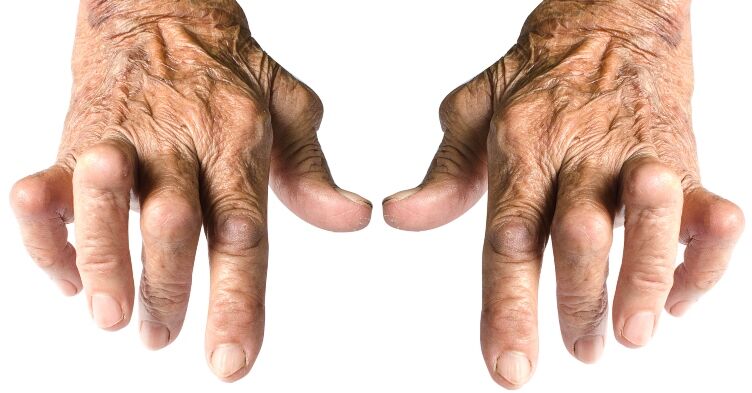Key learning points:
– To understand the overwhelming nature of the condition and the development of symptoms
– Demystifying the condition’s cause and perpetuating factors
– Greater confidence in managing the condition in community settings
Chronic fatigue syndrome (CFS), is also known as myalgic encephalomyelitis (ME). Patients understandably often identify more with the definition of ME as they try to describe the extent of their experience. Although neither are satisfactory, the British term of CFS1 defines the condition as a severely limiting, long-term, physical health condition2 that exhibits significant cognitive dysfunction, with emotional, social and economic consequences.3 Best estimates describe an incidence in 0.4% of the UK population; with the economic impact on the country producing both direct and indirect costs of £6.4 billion.4
It is the GP and primary care nurses who can determine diagnosis for the majority of cases.5 However, treating up to 40 patients, in a catchment of 10,000 patients, it is CFS’s unpredictability and wide fluctuations that poses such far-reaching difficulties for the community.6 The National Institute for Health and Care Excellence (NICE) guidelines1 estimate that the heterogeneous and multidimensional nature of the condition results in up to 50% of presentations requiring input from specialist services.7 Nonetheless such resources are sparse and with 8,000 patients estimated to access UK NHS specialist clinics per annum,8 programmes are inevitably time limited.
This article is designed to guide primary care nurses in confident diagnosis, assessment and management of CFS in adults. The most common at-risk groups, triggers, signs and symptoms, severity classification and the main evidence-based interventions will be outlined. It is also intended to contribute to the personal health and wellbeing debate for nurses and allied health professionals, who are at high risk of developing the illness.
At risk groups and triggers
Those most susceptible are in physically and emotionally demanding roles such as health, social or child professions, teaching, managerial and the self-employed, or circumstances that require reliability and personal sacrifice. These examples involve conscientious achievers who enjoy challenges in all areas of their life; therefore personality style is very relevant to the development of the illness.9 The most frequently reported triggers include severe viral or bacterial illness, surgery, or physical/psychological or emotional trauma.10 Anyone under sustained stress, going through bereavement, or becoming a new mother, that experiences one or several triggers may also be at risk.1
Physical signs and symptoms
Underlying degenerative pathology has not been identified.11 Etiology and prognosis remain under debate, with The World Health Organization’s (WHO) classification as a neurological illness not being universally accepted.12 However, many models offer elucidation, the most consistent being a physiological, neurological or autoimmune dysregulation.1 There is evidence that the condition begins with circadian rhythm dysregulation, and as the body clock loses its ability to reset rhythms, functions such as hormone production, deep sleep cues and the body’s immune function are affected.13 Disturbed and unrefreshing sleep results affects short-term memory function and concentration, word finding and information processing.14 A debilitating fatigue that is unlike everyday tiredness, not fully resolved by sleep or rest is reported.15 The developing sleep disorder results in day time sleep and the enforced rest generated by the triggers rapidly develops into severe muscle de-conditioning.16
Diagnosing
CFS remains a diagnosis of exclusion without a clinical diagnostic test, relying on the recording of significant clinical features and standard investigations, as outlined by NICE.1 Not lifelong and of at least four months duration, the account of unrefreshed sleep and ‘payback’ (an increase in symptoms after a patient has completed too many activities/exercise)14 are hallmarks of the disease. However, differential diagnoses of irritable bowel syndrome (IBS), headaches, fibromyalgia and restless legs syndrome can also provide evidence of underlying CFS. Patients are also likely to report reactive anxiety and depression.1 History will include one or more triggers and continued symptoms, despite successful treatment for other diagnoses such as mood disorders, vitamin D deficiency, pernicious anaemia, coeliac disease, hypothyroidism, cancer or physical and emotional trauma. Nonetheless, patients frequently present with complex co-morbidities such as diabetes, migraine, endometriosis, crones disease and arthritis, which while not excluding CFS, creates a complicated presentation.
Severity
Mild illness generally allows patients to continue in work or education roles but requires significant resting periods to restore between commitments. The moderately affected will describe substantial compromise to physical activities, such as exercise, personal care and socialising. Sleeping in the day is likely to last one to two hours, with correspondingly poor quality night time sleep. The more severe will spend the majority of their time in bed without feeling recovered, rarely leaving the house, sensitivity to light and noise is significant and all activities are extremely disrupted.1
Interventions
The extensive burden of CFS symptoms requires robust initiatives.17 Although commentators contest optimum interventions,10 the research based interventions outlined prove effective both in the specialist and community setting.1,17 Collaboration is central, with goal-orientated methods promoting patient control and engagement in individualised self-management plans,18 particularly relevant in the diverse symptomology and varying severity found in CFS.19 Early recognition is essential to prevent further physical deconditioning. Ways to do this include:
1. Sleep hygiene
Re-establishing a regular pattern is essential and should involve setting an alarm, both for rising time and to contain sleeping in the day. As the pattern may be extremely disordered, to being completely reversed or insomnia followed by hypersomnia, changes should be made slowly with gradual earlier waking times set to eliminate daytime dependence and improve rising time.1
2. Rest
Rest is a central principle in managing reduced energy reserves. However, prolonged rest, particularly in a supine position will have been used to relieve symptoms, but will result in rapid deconditioning;19 reduction should be approached carefully.1
3. Pacing activity
Primary care occupational (OT) and physiotherapy (PT) assessments are recommended for both moderate and severe patients to assist with a balanced baseline of activity. Such areas to consider include personal care, social, work and/or domestic responsibilities. Without examining the patient’s routine and circumstances, it can be difficult to reduce their boom and bust approach to obligations, or maintain a sense of self.9,19
Diaries can highlight patterns of behaviour and symptom severity, enabling successful management to be confirmed and areas for development to be identified.1
4. Graded activity
Negotiating goals promotes a positive way forward and structured objectives. Employ SMART (specific, measureable, achievable, realistic, time bound; see Resources section for more information) to enable review and modification.20 Once severity is fully understood, the person can progress to re-introduce or increase activities they regard as priorities.
5. Lifestyle programmes
Lifestyle programmes with allied health input would complement the primary care nurse consultations. Exercise routines for the more ambulatory require cautious consideration, as patients have severe muscle weakness rather than being unfit. But if managed by a knowledgeable practitioner, the routines build strength and stamina.16
Activity should always be below the patient’s maximum capability in order to be sustainable and still maintain other commitments, as going beyond baselines will de-stabilise, result in setbacks and could perpetuate deterioration.
6. Psychological therapies
Psychological therapies, including counselling and clinical psychology should be considered for any traumatic experiences or mental health difficulties disclosed.21 Cognitive behavioural therapy and mindfulness are extremely helpful tools,22 and when combined with pacing and grading methods they are seen to be the optimum treatment approach.16
7. Relaxation
Relaxation is a skill that requires experimentation and practice in order to gain insight into the obstacles and benefits; being essential to stabilising symptoms.
8. Symptom management
Symptoms, mainly insomnia, pain, anxiety and depression should be managed to aid stability. Although amitriptyline remains the most indicated medication, other anti-depressants, beta blockers, proton pump inhibitors and analgesics are also relevant to symptom control.1 However, they should be monitored for side effects.
Supporting patients
Group sessions utilise shared experiences and promote self-management,1 while one to one consultations explore individual circumstances. Techniques such as motivational interviewing equip patients to regain control of their health through behavioural change.23
Resources and further reading
British Association of CFS/ME – bacme.info/
Action for ME – actionforme.org.uk/
ME Association – meassociation.org.uk/
Association of Young People with ME – ayme.org.uk/
SMART – georgeambler.com/how-to-create-smart-objectives/
References
1. NICE. Chronic Fatigue Syndrome/Myalgic Encephalomyelitis (or Encephalopathy): diagnosis and management. nice.org.uk/guidance/cg53 (accessed 31 August 2015).
2. McGorm K, Burtona C, Wellera D, Murraya G, Sharpeb M. Patients repeatedly referred to Secondary Care with symptoms unexplained by Organic Disease: Prevalence, Characteristics and Referral Pattern. Family Practice 2010;(27):479-486.
3. Christley Y, Duffy T, Everall I, Martin C. The Neuropsychiatric and Neuropsychological Features of Chronic Fatigue Syndrome: Revisiting the Enigma. Current Psychiatry Report 2013;15(353):1-9.
4. Reynolds K, Vernon S, Bouchery E, Reeves W. The Economic Impact of Chronic Fatigue Syndrome. Cost Effectiveness and Resource Allocation 2004:2(4):1-9.
5. NHS. Care Pathway for the management of CFS/ ME, developed by The Map of Medicine. Institute for Innovation and Improvement. cfsmenorth.nhs.uk/resources-and-downloads (accessed 12 September 2015).
6. Haywood K, Staniszewska S, Chapman S. Quality and acceptability of patient-reported outcome measures used in Chronic Fatigue Syndrome/Myalgic Encephalomyelitis (CFS/ME): A Systematic Review. Quality of Life Research 2012;21:5-52.
7. Holgate S, Komaroff A, Mangan D, Wessely S. Chronic Fatigue Syndrome: Understanding a Complex Illness. Nature Reviews/Neuroscience 2011;12(9):539-544.
8. Crawley E, Collin S, White P, Rimes K, Sterne J, May M. Treatment outcome in adults with Chronic Fatigue Syndrome: A Prospective Study in England based on the CFS/ME National Outcomes Database. Quarterly Journal of Medicine 2013;61:1-11.
9. Pemberton S, Cox D. Experiences of daily activity in Chronic Fatigue Syndrome / Myalgic Encephalomyelitis (CFS/ME) and their implications for rehabilitation programmes. Disability and Rehabilitation 2014:36(21):1790-1797.
10. Ene S. Faces of Fatigue: Ethical considerations on the treatment of Chronic Fatigue Syndrome. American Journal of Bioethics Neuroscience 2013;4(3):22-26.
11. Powell P, Bentall R, Nye F, Edwards R. Randomised controlled trial of patient education to encourage Graded Exercise in Chronic Fatigue Syndrome. British Medical Journal 2001;322(7283):387-392.
12. WHO. Postviral fatigue syndrome. icd10data.com/ICD10CM/Codes/G00-G99/G89-G99/G93-/G93.3 (accessed 13 February 2016).
13. Komaroff A. Myalgic Encephalomyelitis/Chronic Fatigue Syndrome: A Real Illness. Annals of Internal Medicine 2015;162:871-872.
14. Fukuda K, Straus S, Hickie I, Sharpe M, Dobbins J, Komaroff A. The International Chronic Fatigue Syndrome Study Group. The Chronic Fatigue Syndrome: A Comprehensive Approach to its Definition and Study. Annals of Internal Medicine 1994;121(12):953-959.
15. Gotts Z, Ellis J, Deary V, Barclay N, Newton J. The Association between Daytime Napping and Cognitive Functioning in Chronic Fatigue Syndrome. PLOS one, 2015. plosone.org/article/fetchObject.action?uri=info:doi/10.1371/journal.pone.0117136&representation=PDF (accessed 12 December 2015).
16. White P, Goldsmith K, Johnson A, Potts L, Walwyn R, Decesare J, Baber H, Burgess M, Clark L, Cox D, Bavinton J, Murphy A, Murphy M, O’Dowd H, Wilks D, Mccrone P, Chalder T, Sharpe M. Comparison of Adaptive Pacing Therapy, Cognitive Behaviour Therapy, Graded Exercise Therapy, and Specialist Medical Care for Chronic Fatigue Syndrome (PACE): A Randomised Trial. The Lancet 2011:823-836.
17. Burns D, Bennett C, McGough A. Chronic Fatigue Syndrome or Myalgic Encephalomyelitis. Nursing Standard 2012;26(25):48.
18. Hurn J, Kneebone I, Cropley M. Goal setting as an outcome measure: A Systematic Review. Clinical Rehabilitation 2006:20:756-772.
19. Marques M, De Gucht V, Gouveia M, Leale I, Maes S. Differential effects of behavioral interventions with a graded physical activity component in patients suffering from Chronic Fatigue (Syndrome): An updated systematic review and meta-analysis. Clinical Psychology Review 2015;40:123-137.
20. Reuben D, Tinetti M. Goal-Oriented Patient Care – An Alternative Health Outcomes Paradigm. New England Journal of Medicine 2012:366(9):777-779.
21. Poppe C, Petrovic M, Vogelaers D, Crombez G. Cognitive Behaviour Therapy in patients with Chronic Fatigue Syndrome: The role of illness acceptance and neuroticism. Journal of Psychosomatic Research 2013;74:367-372.
22. Rimes K, Wingrove J. Mindfulness-Based Cognitive Therapy for People with Chronic Fatigue Syndrome Still Experiencing Excessive Fatigue after Cognitive Behaviour Therapy: A Pilot Randomized Study. Clinical Psychology and Psychotherapy 2013;20:107-117.







